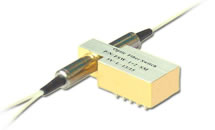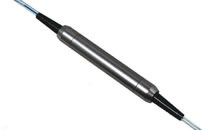Optical Circulators


Click Here to view the Circulator Range
An optical circulator is a sophisticated device used in fiber optics to control the direction of light signals. It functions by allowing light to travel in one direction while preventing it from returning to its source. This unidirectional flow is crucial in various applications, such as telecommunications and data transmission, where signal integrity and efficiency are paramount. By ensuring that light can only move from one port to the next, optical circulators help minimize signal loss and interference, making them essential components in modern optical networks.
How Does an Optical Circulator Work?
The operation of an optical circulator is based on the principles of polarization and the use of specific optical components. Typically, an optical circulator consists of three main parts: wave plates, Faraday rotators, and birefringent crystals. When light enters the circulator, it is split into two beams with orthogonal polarization states. These beams then pass through wave plates that rotate their polarization, allowing them to interact with the Faraday rotator, which further modifies their polarization. This carefully orchestrated process ensures that the light can only exit through the designated port, effectively 'circulating' the light in one direction.
Key Components
Optical circulators are composed of several critical components that work together to achieve their functionality. The wave plates, such as half-wave plates, are used to manipulate the polarization of light. Faraday rotators are non-reciprocal devices that rotate the polarization of light in a single direction, regardless of the light's incoming path. Birefringent crystals play a vital role in separating the light beams based on their polarization states, allowing for precise control over their paths. Understanding these components is essential for grasping how optical circulators operate and their applications in fiber optics.
Click Here to view the Circulator Range
Applications
Optical circulators are widely used in various applications within the telecommunications industry. They are integral to wavelength division multiplexing (WDM) systems, where multiple signals are transmitted simultaneously over a single fiber. By directing signals to different paths without interference, optical circulators enhance the capacity and efficiency of optical networks. Additionally, they are used in optical amplifiers, sensors, and laser systems, where controlling the direction of light is crucial for performance and reliability.
Different Circulator Designs
While the basic principle of operation remains the same, there are several designs of optical circulators available in the market. Each design may utilize different configurations of wave plates, Faraday rotators, and birefringent crystals to achieve specific performance characteristics. Some designs may focus on minimizing insertion loss, while others may prioritize compactness or cost-effectiveness. Understanding the various designs can help users select the most suitable optical circulator for their specific application needs.
Advantages
The use of optical circulators offers several advantages in fiber optic systems. One of the primary benefits is the reduction of signal loss, which is critical for maintaining the integrity of data transmission over long distances. Additionally, optical circulators enable more efficient use of fiber resources by allowing multiple signals to be routed without interference. Their compact design also makes them suitable for integration into various optical devices, enhancing overall system performance.
Click Here to view the Circulator Range
Challenges and Considerations
Despite their advantages, there are challenges associated with the use of optical circulators. One significant consideration is the potential for polarization-dependent loss, which can occur if the polarization states of the light are not properly managed. Additionally, the performance of optical circulators can be affected by temperature variations and other environmental factors. Users must carefully consider these factors when integrating optical circulators into their systems to ensure optimal performance.
Future Trends in Optical Circulator Technology
As the demand for high-speed data transmission continues to grow, the development of optical circulator technology is evolving. Researchers are exploring new materials and designs that can further enhance the performance of optical circulators, such as reducing size and improving efficiency. Innovations in integrated photonics may also lead to the creation of more compact and versatile optical circulators that can be easily incorporated into advanced optical networks.
Optosun make a wide range of Optical Circulators in various wavelengths, for various applications, including WDM / OADM, bi-directional transport systems, dynamic gain equalizers (DGE), dispersion compensation modules (DCM), EDFA Optical Fiber Amplifiers, Fiber Lasers, Fiber Dispersion Compensation, Pump laser diodes, and various other optical modules and systems.
All Optical Circulator Products

